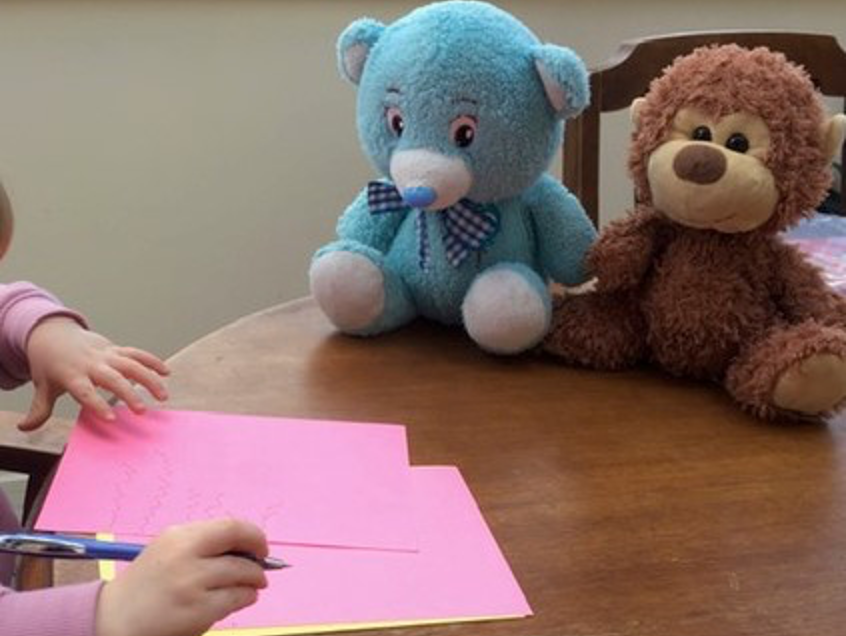My latest online course, Exploring literacy – vocabulary, guides us through an understanding of ways to take our students’ vocabulary from that of the everyday – part of the ‘literate identity’ that starts in the home and the child brings to school – through to the academic literacy acquired through learning, and required for school success. The course will help develop your skills and understanding with vocabulary, and is available on this site.
Words and their meanings
The past, the present and the future walked into a bar. It was tense.
Jokes only work when we understand both meaning and context, which takes us beyond ‘merely words’.
The broader a person’s vocabulary, the more opportunity there is for play. An understanding of context provides the humour. In this case, the three verb tenses belong in English grammar, the three characters walking into a bar is a classic joke line and the cleverness comes with this juxtaposition in meaning in the last sentence. (Grammar jokes can be pretty lame. Check here for a history of this and other jokes).
Multiple meanings and plays on words in different contexts are used by humorists, poets and the powerful; they can be the essential element in a joke, the key to metaphor, used deliberately for obfuscation, and are often a source of confusion. It is important that we introduce and develop word play with our students.
We can help broaden students’ understanding of wider contexts through the texts we read to them, and by providing a varied range of printed, visual and multi-modal texts, as required by the Australian Curriculum (AC) (Key ideas around texts and comprehensive lists for Australian States and Territories here).
Jokes about COVID-19 – face masks, hand sanitizer, social isolation, clean air, empty streets and fights over toilet paper will all be part of our context, and, of course, will become less meaningful as time goes on.
An incident with a small child steered my thinking towards one aspect of vocabulary. Not an obvious one, verb tenses – the trigger for the joke in the first place.
‘Literate identity’ (Scott, J., Nagy, B. & Flinspach, S. 2008 p.195)
Young children want to know the names of things, and to learn how to express themselves as clearly as possible. The models and encouragement they get from their families and carers – to whatever extent – builds their home literate identity.
F. (almost 3 years old) was drawing and writing with her toy gorilla, ‘Rilla’ (naturally). She announced that Rilla had completed his picture by saying, ‘Look what he has … drawed … drewen.’ This demonstration of established knowledge and search for the complex form caught my attention.
She tried the inflection used for regular verbs (‘drawed’), then pulled in the past tense of the verb ‘draw’. She added the ‘-en’ which probably should have fitted in there somehow.
It is all about the verb.
In English, verbs/verb groups/processes don’t only tell about WHAT is happening, they tell WHEN. The WHEN part is the tense. This is articulated in the Australian Curriculum English sequence of content for Year 3:
Understand that verbs represent different processes, for example; doing, thinking, saying, and relating and that these processes are anchored in time through tense (ACELA1482)
English sequence of content: Australian Curriculum P. 4 (AG emphasis)
There are different forms of verbs for each tense, ie whether the event is fully completed in the past, or may be repeated in the future, or may have occurred at the same time something else was going on. (Sometimes a verb has no time context; this is referred to as the infinitive form, and beyond the scope of his blog).
A functional approach to language
The Australian Curriculum is based on a functional approach to language – that is, teaching and learning about our English language is concerned with
‘real language used by real people – not schoolbook exercises contrived purely to teach some point of grammar … ‘
Derewianka 2020 p.2 (AG emphasis)
That means that explicit teaching of tense in K-6 should be as an integral component of text structure, to support the understanding of texts – real language used by the real people; our students developing their academic literacy.
Here’s where English tense sits in the AC:
In Year 3:
Understand how different types of texts vary in use of language choices, depending on their purpose and context (for example, tense and types of sentences) (ACELA1478)
and in Year 6:
Understand how ideas can be expanded and sharpened through careful choice of verbs, elaborated tenses and a range of adverb groups/ phrases (ACELA1523)
English sequence of content 2015 Page 2
As teachers, we need to develop a clear understanding of English tenses and why and how they work within texts. If we have EAL/D students, it is even more important. NSW Department of Education has comprehensive resources here.
Regular and irregular verbs
Had F. said: ‘Look what he drew,’ the action is in the past = verb form is simple past tense.
While the action has been completed, the possibility is there that ‘he’ may draw something again, now or in the future, and implies
‘Look what he drew this time.’
With her original statement, F. had wandered into this interesting area of regular and irregular verbs, and the form of the verb called the past participle, required for the present perfect tense that she needed. Rilla had finished his drawing, and was not going to do another.
REGULAR verbs have the same or a similar form. We add the inflection ‘-ed’ on the end (happened) and sometimes ‘d’ (baked), or ‘t’ (spent).
IRREGULAR verbs have various ways of forming the past tense and the past participle.
F. used ‘drawed’ and altered it to ‘drew’. She had some knowledge about using the ‘-en’ at the end, as with some irregular verbs, but the hesitations demonstrated her uncertainty.
What F. was looking for was how to construct:
‘Look what he has drawn.’ = the verb form is present perfect tense, which refers to an action that was started and completed at some unspecified time in the past. It uses the auxiliary verb ‘have’ with the past participle, in this case ‘has drawn’. It was the introduction of the auxiliary verb ‘has’ that signaled the need for a different form of the verb.
How to teach this to a nearly-3 year old? I modelled the appropriate word –
‘Show me, what has Rilla drawn?’
Quite sufficient at this stage, and frequently sufficient for your students until they need explicit teaching within their work with text.
The world of participles opens up the possibilities for deeper understanding of English tenses and how they work.
Participles
Participles are a form of the verb. They require two or more parts, generally an auxiliary verb. It is the auxiliary verb that gives the WHEN – the tense of the action.
For REGULAR verbs, the past participle takes the same form as the past tense.
For IRREGULAR verbs, the past participle can take several forms.
eg ‘Look what he has drawn.’ ‘We have been in isolation.’ ‘We haven’t swum since summer.’
(An excellent reference is at The Free Dictionary).
Participles also have a present form, used to refer to an ongoing action. These always end in ‘-ing’
eg ‘We are drawing on yellow paper.’ ‘We were swimming every day in December.’
Participles can also function as an adjective, such as “drawn” or “drawing.”
As an adjective, this form of the verb is part of the noun group, or ‘participant’.
eg He placed the drawn image into the picture frame.
‘drawn’ comes from the verb ‘draw’ but is being used as an adjective.
She put the drawing materials into the case.
‘drawing’ comes from the verb ‘draw’ but it is being used as an adjective.
The present participle can function as a noun, in which case it is referred to as a ‘gerund’.
eg Rilla likes drawing; he likes to use yellow paper.
‘drawing’ comes from the verb ‘draw’ but is being used as a noun, the name of the activity.
The past participle can be used in the passive voice (Nordquist, 2019).
eg The picture was drawn on yellow paper.
In all cases, as Derewianka states, The participle retains the ‘content meaning’ of the verb (2011 p. 28)
F.’s literate identity continues to develop, and she will begin her formal education more than ready to build her academic literate identity. Rilla’s drawing is also expected to continue to develop.
Resources: Visual Explanations of Each English Tense
If you are keen to pursue your understanding, I recommend looking at tenses in a visual form. Try these sites:
See also Derewianka’s 2011 text ‘Exploring how texts work 2nd Edition pages 26-36
References
ACARA (2015) Australian Curriculum Sequence of Content at https://australiancurriculum.edu.au/f-10-curriculum/english/ accessed 18/05/2020
Beare, K. (2018) Visual Explanations of Each English Tense at https://www.thoughtco.com/english-grammar-tenses-chart-4123178 accessed 15/05/2020
Classic Jokes at https://www.rd.com/funny-stuff/history-behind-common-jokes/
Derewianka, B. (2020) Exploring how texts work 2nd Edition Newtown: Primary English Teaching Association Australia
Derewianka, B. (2011) A new grammar Companion for Teachers, Newtown: Primary English Teaching Association Australia
Diagram Visual Information Limited (2008) Dictionary of Unfamiliar Words
Nordquist, Richard. “Past Participles in English Grammar.” ThoughtCo, Feb. 11, 2020, thoughtco.com/past-participle-1691592 accessed 13/5/2020
Scott, J., Nagy, B. & Flinspach, S. (2008) More than merely words: Redefining vocabulary learning in a culturally and linguistically diverse society. In A. Farstrup & J. Samuels (Eds.). What Research has to say about Vocabulary Instruction (pp.182-210) Newark, Delaware: International Reading Association








